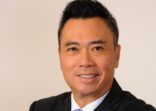Gregor Dannacher, T Rowe Price
The firm’s high yield strategies, which include global, US, Europe and emerging market portfolios, have 8%-13% of their assets in bank loans, compared to 0%-8% last year, said Dannacher, who has a client-facing remit for the firm’s high yield and US investment grade strategies.
“We’ve added them in our high yield portfolios because they naturally reduce duration, which is helpful in a rising rate environment,” he told FSA. “With a shorter duration, you have less interest rate exposure.”
Within the fixed income market, bank loans have the lowest duration, he added.

Sources: BofA/Merrill Lynch and JP Morgan Chase & Co and S&P/LSTA Performing Loan Index.
Dannacher said that year-to-date, bank loans have become one of the best performing asset classes within the fixed income universe.
Bank loans are floating rate instruments, which means investors get paid “Libor plus a spread”, he explained.
“Interest rates have risen, so the Libor portion has gone up and so has the coupon for loans, which is why it has been an asset class that people see as an oasis for returns in fixed income.”

Sources: BofA/Merrill Lynch and JP Morgan Chase & Co and S&P/LSTA Performing Loan Index.
Beaten up HY
On the flipside, emerging market and European high yield have become the worst performers this year within the different high yield sectors.
“The Trump trade wars and the increasing rates, which led the dollar to go higher versus other currencies, have put pressure on emerging markets,” Dannacher said, adding that the most affected countries are Turkey, Russia and Argentina.
“That has caused the volatility in emerging markets and that’s why emerging market corporates have generally not performed that well this year.”
Turning to Europe, Dannacher said that the heightened political tensions in Italy have caused some weakness in the whole European market.
However, Dannacher sees a buying opportunity and the firm to increased high yield allocations in both EMs and Europe.
“In high yield, sometimes, the best returns are looking in places that have been beaten up the most, because that creates opportunity for price appreciation. If you wait until everything looks rosy and great, then you’ve missed the price appreciation potential,” he said.
Country weightings for the firm’s Global High Income Fund (%)
| Name |
As of end-June |
As of end-2017 |
| North America |
47.8 |
47.39 |
| Europe ex-UK |
21.17 |
18.57 |
| Americas |
12.58 |
18.11 |
| Pacific Basin |
6.43 |
3.27 |
| UK |
4.75 |
4.03 |
| South Africa |
2.45 |
0.84 |
| Middle East / Africa |
1.92 |
1 |
| Money market |
1.77 |
5.11 |
| Australasia |
0.88 |
0.92 |
| Others |
0.57 |
0.77 |
Source: FE Analytics
Simplifyng FX
The firm’s high yield strategies only invest in hard currencies and European currencies are hedged back to the US dollar, according to Dannacher.
He explained that there are four main drivers for returns in high yield: credit selection, sector and ratings allocations, regional allocations and foreign exchange.
“Through our bottom up fundamental process, we have the first three under control. We don’t want to get the first three right, which is really hard to do, and then have foreign exchange move one way or the other — we have less ability to control that,” he said.
“From a high yield perspective, we think of controlling what we can control and try to simplify an already complex asset class. Let’s not make it more complex by throwing in FX.”
The T Rowe Price Global High Income Bond, managed by Mark Vaselkiv and Michael Della Vedova, versus its benchmark and sector in Hong Kong.

Note: Fund, index and sector NAVs have been converted to US dollars.

















